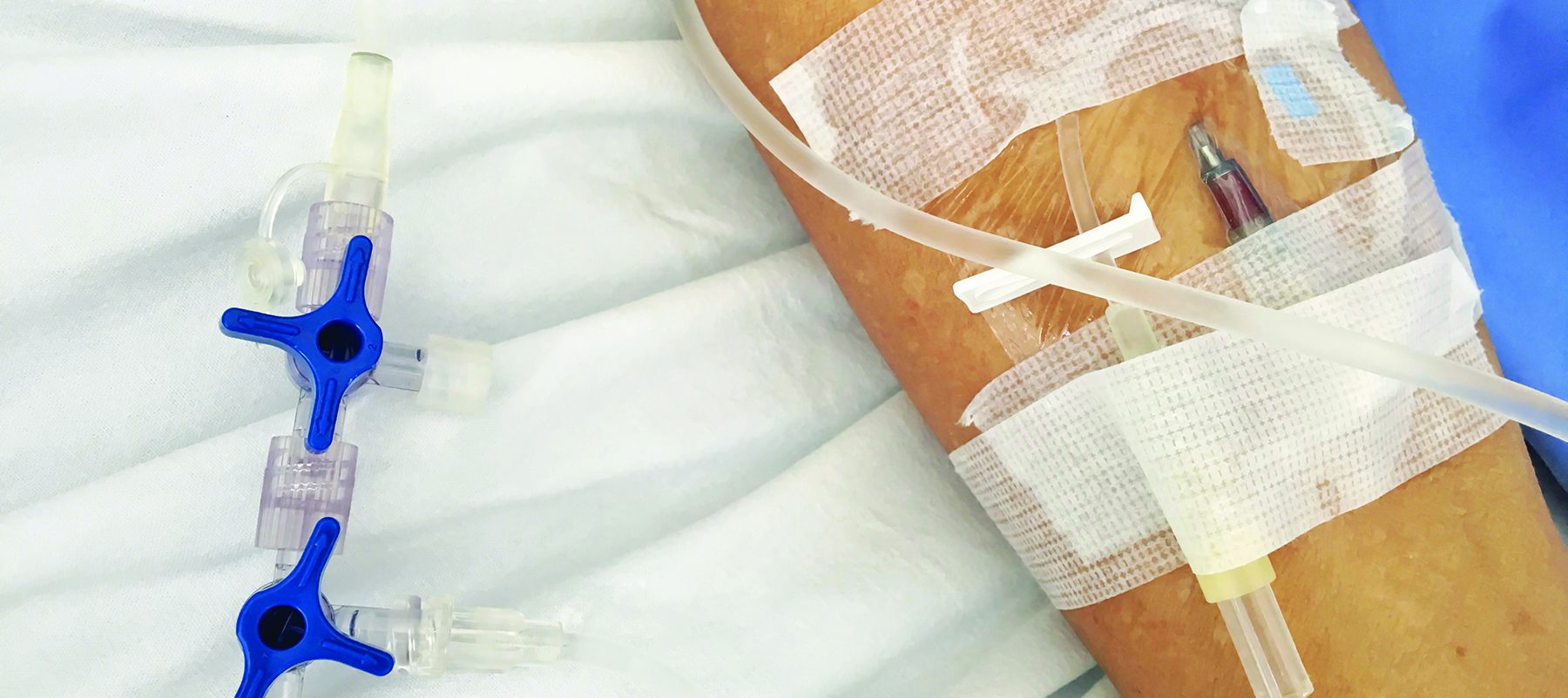Mike Roberts, age 65, is admitted to the Cardiac Surveillance Unit (CSU) after coronary artery bypass graft surgery. You’ve instructed him not to get out of bed.
On his third postoperative day, you remove his central venous catheter (CVC). After you leave the room, he asks his wife to help him to the bathroom. When he returns to bed, he tells a patient-care technician (PCT) he is light-headed and having chest pain and difficulty breathing. The PCT calls you for help.
Assessment hints
On entering the room, you find Mr. Roberts pale and anxious, struggling for air. You quickly obtain his vital signs: respiratory rate, 36 breaths/minute; heart rate, 136 beats/minute; blood pressure, 90/50 mm Hg; oxygen saturation (O2 sat), 86%. His lungs are clear, and you place him on 4 L oxygen per standing order.
In light of his recent surgery and history of myocardial infarction (MI), you arrange for a 12-lead electrocardiogram (ECG). Mr. Roberts states that his current chest pain doesn’t feel like the chest pain he had before surgery.
Then you notice that the occlusive dressing over the CVC site has loosened, exposing the site to air. When the PCT tells you the patient got out of bed shortly after you’d removed the CVC, you suspect air embolism. You immediately cover the site with a new dressing—then call the rapid response team (RRT) and attending physician.
On the scene
When the RRT arrives, you summarize your findings. The patient is confused and cyanotic. The team places him in left lateral Trendelenburg position, gives 100% oxygen by nonrebreather mask, and infuses 0.9% normal saline solution. The attending physician orders arterial blood gas (ABG) analysis, and a chest X-ray.
The 12-lead ECG reveals sinus tachycardia with right-sided heart strain and peaked T waves. The chest X-ray is normal, but ABGs show hypoxia and hypercarbia. These results confirm air embolism—most likely introduced through the track left behind after CVC removal. When the patient got up to walk to the bathroom, his upright position caused venous circulation to fall below atmospheric pressure, sucking air into the venous circulation.
Outcome
Unless detected promptly, an air embolism that travels to the heart can block blood flow from the right ventricle to the pulmonary artery. The right ventricle continues to pump, increasing its workload. Reduced cardiac output, shock, and death may result.
Fortunately, because you and the RRT acted quickly, Mr. Roberts avoids a catastrophic outcome. His condition begins to stabilize as the supplemental oxygen causes nitrogen in the embolus to dissolve and the left lateral Trendelenburg position forces the embolus away from the pulmonic valve, permitting blood flow through the pulmonary circulation.
Mr. Roberts is transferred to the intensive care unit for closer observation. There, his vital signs return to normal. His skin looks pink, O2 sat is 100% on a nonrebreather mask, and respirations are easy. He is slowly weaned off oxygen and by the next morning is on room air.
Education and follow-up
When caring for a patient with a CVC, always use tubing with twist-lock connections, and check all junctions often to confirm they’re secure. Avoid using anything sharp near a CVC, and eliminate air from syringes and I.V. tubing.
During CVC removal, keep the patient supine and have him perform the Valsalva maneuver as the catheter is withdrawn to increase intrathoracic pressure and lower the risk of air entering the venous circulation. (If the patient can’t follow instructions, remove the CVC during expiration.) Once hemostasis occurs, cover the site with a sterile occlusive dressing—and be sure to communicate with family and staff members about the patient’s need for bed rest.
Cindy Ruiz is a Clinical Nurse Specialist at Northwest Community Hospital in Arlington Heights, Ill.


















